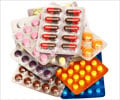There is an emerging risk of HIV transmission among injection drug users. Scientists find cost-effective ways to combat HIV risk.

‘Opioid Agonist Therapy (OAT) could be a cost-effective way to combat HIV risk among injection drug users.’





Bernard is the lead author of a study on prevention programs that could head off a resurgence of HIV and perhaps decrease the effects of the opioid crisis. The study will be published online May 24 in PLOS Medicine. The senior author is Margaret Brandeau, PhD, professor of management science and engineering.In July 2016, Bernard and her co-authors published a different study examining pre-exposure prophylaxis, or PrEP, a pill that reduces a person's risk of infection when they come into contact with the HIV virus. The researchers found that PrEP was effective, but expensive.
The new study examines alternatives that also reduce the risk of HIV infection but are more cost-effective. They created a model to determine how many quality-adjusted life years -- a metric that incorporates both life expectancy and quality of life -- a person could gain from four HIV prevention methods, and what those years would cost.
"The dynamics of HIV prevention and treatment are complex," Brandeau said. "Our model allows us to evaluate the costs and effects of the interventions, singly and in combination, to determine what programs would be effective and cost-effective in preventing the spread of HIV among persons who inject drugs."
Prevention models studied
Of the prevention programs simulated in the model, the authors found that opioid agonist therapy, or OAT, was the most cost-effective. OAT replaces drugs like heroin with a prescription that provides similar effects under safer conditions. Methadone and buprenorphine maintenance therapies are the most common.
Advertisement
The study estimated that PrEP can also successfully reduce HIV, but not in a cost-effective way. The authors write that the other three techniques could all cost less than $50,000 for each quality-adjusted life year gained by individuals. PrEP would likely cost more than $600,000 per quality-adjusted life year.
Advertisement
According to Bernard, one of the benefits of OAT in particular is that in addition to reducing the risk of HIV, it can also help people stop injecting drugs. The authors project that expanding OAT access could decrease the size of the injection population by up to 23 percent over 20 years for low-coverage expansions and up to 37 percent over 20 years for more extensive program expansions.
OAT found to be 'highest-value investment'
"We started out thinking about this as an HIV problem, but we realized that the majority of health benefit actually comes from reducing injection drug use and improving quality of life for drug users," said Bernard. "This is why we found OAT to be the highest-value investment."
Bernard and her co-authors believe that employing techniques like OAT could help reduce the effects of the opioid crisis.
"Our study aims to help policymakers and clinicians understand how a variety of interventions can help improve health outcomes and prevent HIV," said study co-author Douglas Owens, MD, professor of medicine and internist at the Veterans Affairs Palo Alto Health Care System. "We hope our analyses help show how to use limited resources efficiently to prevent the devastating consequences of substance use."
Source-Eurekalert















